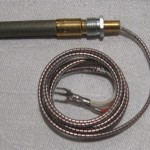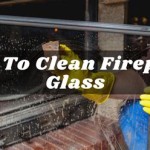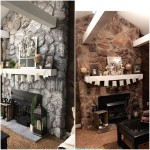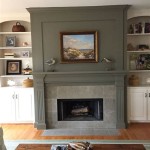Why Does My Fireplace Have Vents?
Fireplaces, traditionally viewed as simple openings for burning wood, often incorporate venting mechanisms designed to improve efficiency, safety, and overall performance. These vents, seemingly unassuming, play a critical role in managing airflow, combustion byproducts, and heat distribution. Understanding why a fireplace is equipped with vents requires an examination of the different types of venting systems and their specific functionalities.
The presence of vents on a fireplace indicates a more complex system than a simple open hearth. These vents are engineered to address issues related to draft, combustion, and heat output. Improperly functioning or blocked vents can lead to a variety of problems, including poor combustion, smoke spillage into the living space, and reduced heating efficiency. Therefore, identifying the type of vent and understanding its purpose is crucial for proper fireplace maintenance and operation.
Improving Combustion Efficiency
One primary reason fireplaces have vents is to improve combustion efficiency. Traditional fireplaces often suffer from poor combustion, meaning they don’t burn wood completely and efficiently. This incomplete combustion results in more smoke, creosote buildup, and wasted energy. Vents can be strategically placed to introduce additional air into the firebox, promoting a more complete burn. This added air, often referred to as secondary or tertiary air, helps to ignite unburned gases and particles, reducing emissions and maximizing heat output.
Fireplaces with air vents, particularly those designed for wood-burning inserts or stoves, often have adjustable vents. These adjustable vents allow for precise control over the amount of air entering the combustion chamber. This control enables the user to fine-tune the burning process, optimizing it for different types of wood and desired heat output. By carefully adjusting the air vents, a more efficient and cleaner burn can be achieved, reducing fuel consumption and minimizing environmental impact.
Furthermore, some fireplace designs utilize vents to create a swirling effect within the firebox. This swirling action helps to mix the air and fuel more thoroughly, leading to a more complete and even burn. The vents are strategically positioned to create a specific airflow pattern that ensures optimal combustion throughout the entire burning process.
The location of the vents is also crucial. Vents positioned near the top of the firebox can help to burn off gases rising from the fuel bed, while vents located near the bottom can supply oxygen to the initial stages of combustion. By carefully considering the placement and adjustability of the vents, fireplace manufacturers can significantly improve the overall combustion efficiency of their products.
Managing Airflow and Draft Control
Another important reason for fireplace vents is to manage airflow and control the draft. A fireplace needs a consistent and appropriately strong draft to draw smoke and combustion gases up the chimney. However, an excessively strong draft can lead to rapid burning of fuel and inefficient heat utilization, while a weak draft can cause smoke to spill back into the room. Vents can be used to regulate the airflow and maintain a balanced draft.
Dampers, often considered a type of vent, are commonly used to control the airflow within the chimney. A damper is a movable plate that can be opened or closed to adjust the size of the chimney opening. When the damper is fully open, the draft is maximized, allowing for rapid venting of smoke and gases. Conversely, when the damper is partially closed, the draft is reduced, slowing down the burning rate and conserving heat.
Vents can also be incorporated into the fireplace design to introduce air from outside the house. This outside air is used specifically for combustion, preventing the fireplace from drawing heated air from the living space. This approach, known as a direct-vent system, helps to maintain a more comfortable and consistent temperature within the house, as it avoids depleting the interior air supply. Direct-vent systems are particularly beneficial in tightly sealed homes, where indoor air quality and energy efficiency are paramount.
In some cases, vents are used to create a specific pressure differential within the fireplace system. By carefully controlling the airflow through different vents, it is possible to create a negative pressure within the firebox, ensuring that smoke is always drawn upwards into the chimney and preventing spillage into the room. This pressure differential is crucial for maintaining a safe and effective fireplace operation.
Facilitating Heat Distribution
Fireplace vents are also used to facilitate heat distribution. Traditional fireplaces are notoriously inefficient at heating a room because much of the heat produced is lost up the chimney. Vents can be strategically placed to capture and redirect some of this heat back into the living space, improving the overall heating efficiency of the fireplace.
Some fireplace designs incorporate vents that circulate air around the firebox, warming the air and then directing it back into the room. These vents are often located near the top of the fireplace, allowing the heated air to rise naturally and distribute throughout the room. The vents may be equipped with fans to enhance the circulation and distribute the heat more quickly and evenly.
Another approach involves the use of vents connected to ductwork that extends to other rooms in the house. This allows the fireplace to function as a supplementary heating system, warming multiple rooms simultaneously. The ductwork can be designed to distribute the heat to specific areas, providing targeted heating where it is most needed.
Fireplace inserts often utilize vents to maximize heat output. These inserts are designed to fit inside an existing fireplace opening and feature a sealed firebox with integrated vents. The vents circulate air around the firebox, capturing the heat and directing it back into the room. Inserts are significantly more efficient than traditional fireplaces, thanks in part to their effective venting systems.
Vents can also be designed to radiate heat directly into the room. Metal vents, for example, can absorb heat from the fire and then radiate it outwards, providing a more consistent and comfortable warmth. The placement of these radiating vents is crucial for maximizing their effectiveness. Ideally, they should be positioned in areas where the heat can be easily distributed throughout the room.
Finally, some fireplaces have vents on the exterior of the chimney. These vents are not directly related to the combustion process but serve to cool the outer surface of the chimney, preventing overheating and reducing the risk of fire hazards. These external vents may also help manage moisture within the chimney structure, preventing deterioration and prolonging its lifespan.
What Is This Vent Above My Firebox Hearth Com Forums Home
Gas Fireplace Venting Explained Heatilator

Vented Vs B Vent Direct Free Dixie S
Remove Or Cover Up Old Heatilator Vents Hearth Com Forums Home

Understanding Fireplace Vents A Guide For Homeowners
Gas Fireplace Venting Explained Heat Glo

Benefits Of Direct Vent Fireplaces
Gas Fireplace Venting Explained Heat Glo

Pin On 1 Decorating Ideas

Any Fireplace Experts Out There On Houzz Need Help With Ugly Vents
Related Posts








